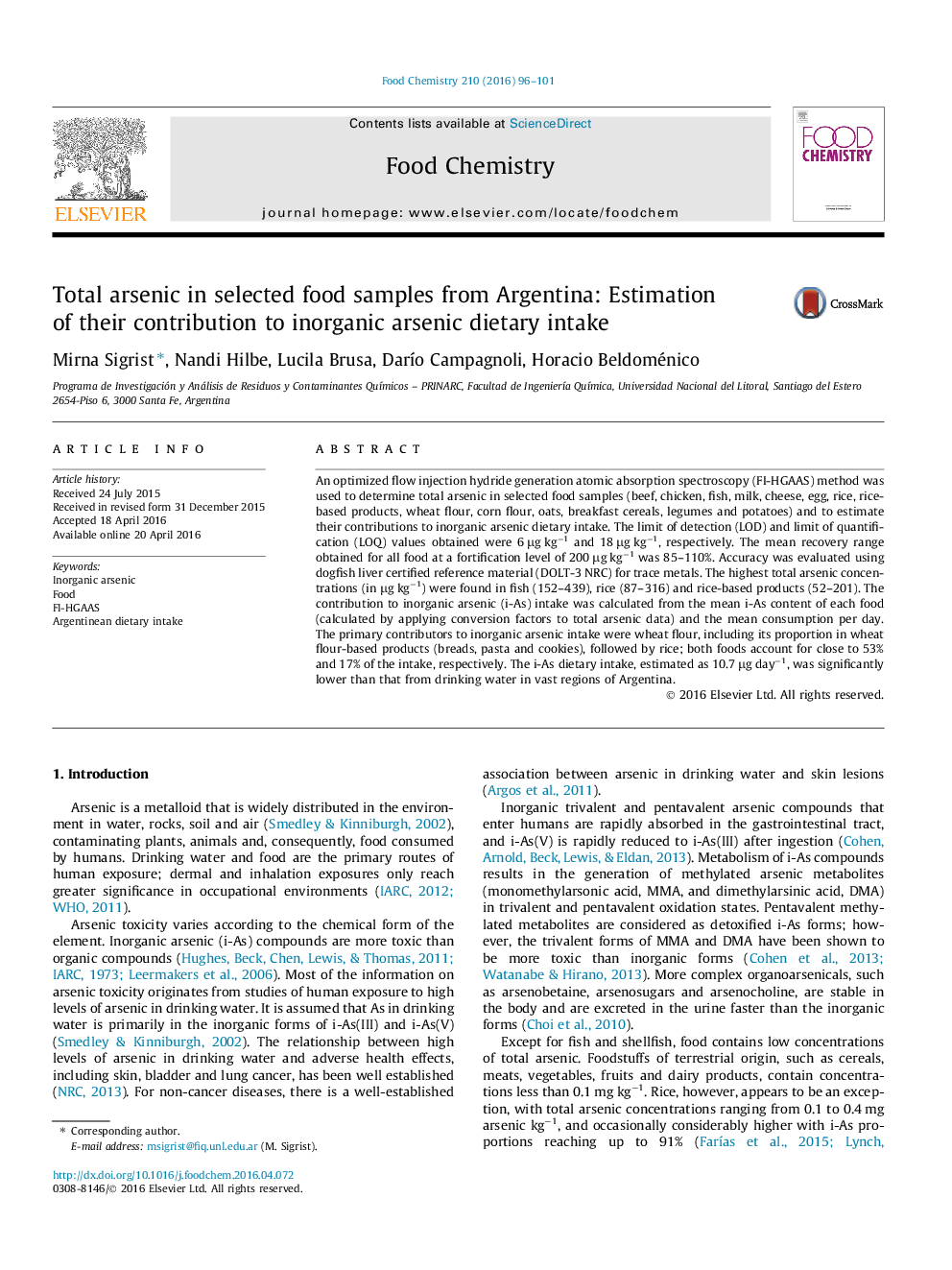| کد مقاله | کد نشریه | سال انتشار | مقاله انگلیسی | نسخه تمام متن |
|---|---|---|---|---|
| 7588053 | 1492082 | 2016 | 6 صفحه PDF | دانلود رایگان |
عنوان انگلیسی مقاله ISI
Total arsenic in selected food samples from Argentina: Estimation of their contribution to inorganic arsenic dietary intake
ترجمه فارسی عنوان
کل آرسنیک در نمونه های غذایی انتخاب شده از آرژانتین: برآورد سهم آنها در مصرف خوراک آرسنیک معدنی
دانلود مقاله + سفارش ترجمه
دانلود مقاله ISI انگلیسی
رایگان برای ایرانیان
موضوعات مرتبط
مهندسی و علوم پایه
شیمی
شیمی آنالیزی یا شیمی تجزیه
چکیده انگلیسی
An optimized flow injection hydride generation atomic absorption spectroscopy (FI-HGAAS) method was used to determine total arsenic in selected food samples (beef, chicken, fish, milk, cheese, egg, rice, rice-based products, wheat flour, corn flour, oats, breakfast cereals, legumes and potatoes) and to estimate their contributions to inorganic arsenic dietary intake. The limit of detection (LOD) and limit of quantification (LOQ) values obtained were 6 μg kgâ1 and 18 μg kgâ1, respectively. The mean recovery range obtained for all food at a fortification level of 200 μg kgâ1 was 85-110%. Accuracy was evaluated using dogfish liver certified reference material (DOLT-3 NRC) for trace metals. The highest total arsenic concentrations (in μg kgâ1) were found in fish (152-439), rice (87-316) and rice-based products (52-201). The contribution to inorganic arsenic (i-As) intake was calculated from the mean i-As content of each food (calculated by applying conversion factors to total arsenic data) and the mean consumption per day. The primary contributors to inorganic arsenic intake were wheat flour, including its proportion in wheat flour-based products (breads, pasta and cookies), followed by rice; both foods account for close to 53% and 17% of the intake, respectively. The i-As dietary intake, estimated as 10.7 μg dayâ1, was significantly lower than that from drinking water in vast regions of Argentina.
ناشر
Database: Elsevier - ScienceDirect (ساینس دایرکت)
Journal: Food Chemistry - Volume 210, 1 November 2016, Pages 96-101
Journal: Food Chemistry - Volume 210, 1 November 2016, Pages 96-101
نویسندگان
Mirna Sigrist, Nandi Hilbe, Lucila Brusa, DarÃo Campagnoli, Horacio Beldoménico,
